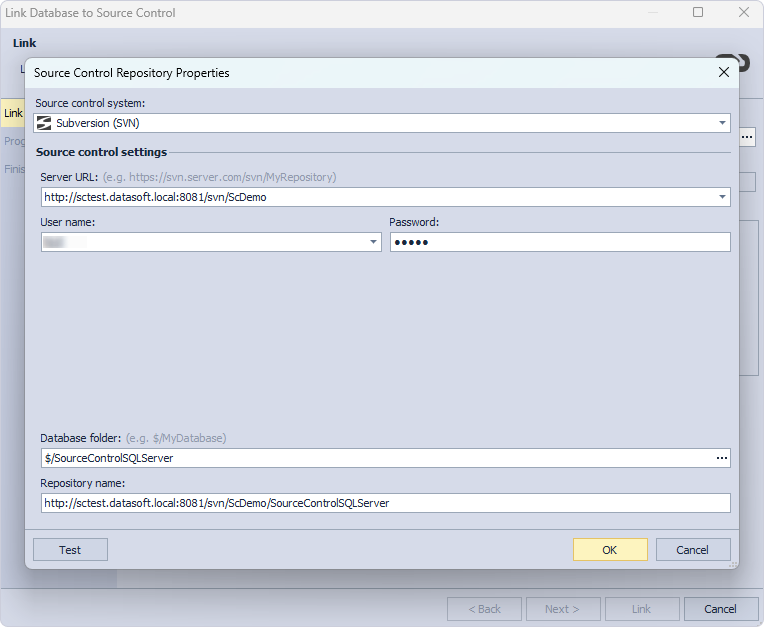Link a database to SVN
dbForge Source Control is a Microsoft SQL Server Management Studio (SSMS) add-in that is designed to manage database changes in the best-known version control systems. With the help of the tool, you can version-control database schemas and data, roll back unwanted changes, handle static data conflicts, and maintain the integrity of the database. Source Control enables you to link your database to Apache Subversion (SVN), an open-source software versioning and revision control system that strives to become a primarily compatible successor to Concurrent Versions System (CVS).
This topic explains how to link a database to Subversion (SVN).
To link a database to SVN:
1. In Object Explorer, right-click a database you want to link to source control and select Source Control > Link database to Source Control to open the Link Database to Source Control wizard.
2. On the Link page of the wizard, click + in the Source control repository field.
3. In the Source Control Repository Properties dialog that opens, select Subversion (SVN) as a source control system from the Source control system dropdown list and specify the following information:
- Server URL, User name, and Password for the SVN server.
- Database folder. To do this, click
 Browse to choose the folder where a SQL script will be stored.
Browse to choose the folder where a SQL script will be stored. - Optional: The Repository name is automatically derived from the server URL. However, you can specify a different name of the repository.
Note
Contact your system administrator to get proper settings for Server URL, User name, and Password.

4. Optional: Click Test to verify that the database can be successfully connected to source control.
5. Click OK to apply the changes and to close the Source Control Repository Properties dialog.
6. Select a database development model: dedicated or shared.
7. Click Link to establish the connection between the database and source control.

The Refresh progress window opens automatically, showing the stages of the refresh operation. The linked database gets the following icon in Object Explorer.

After linking to SVN
If you are the first person to link this database, add the database objects to source control in an ‘initial commit’. To do this, go to the Local changes section, select the objects, and click Commit. For more details, see Commit changes.
If you linked a database that is already in source control, update your database to the latest version. To do this, go to the Remote changes section, select the objects, and click Get Latest. For more details, see Get the latest version.